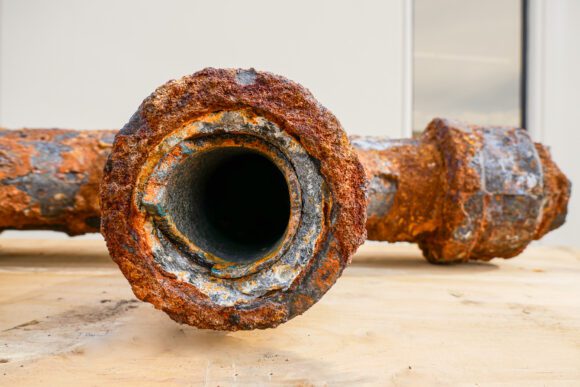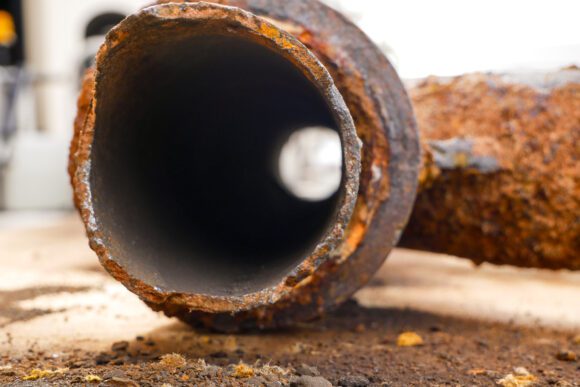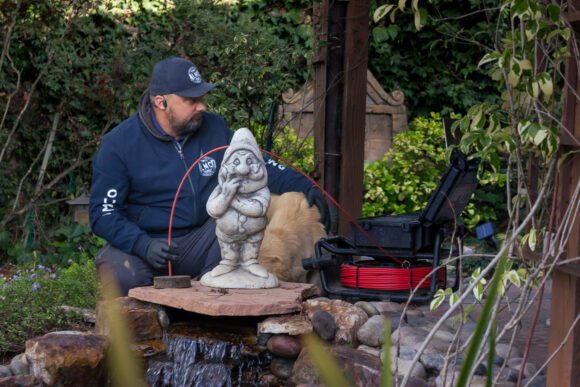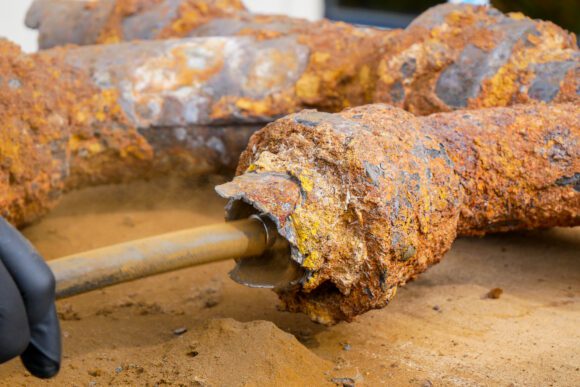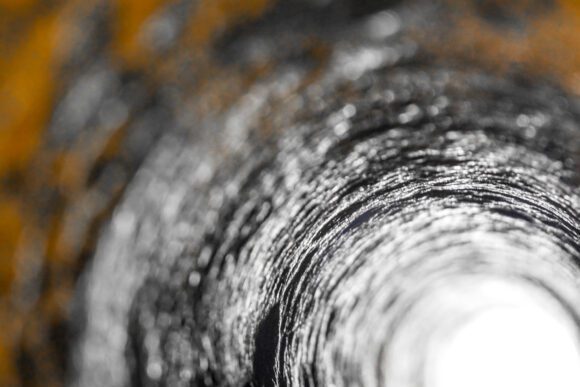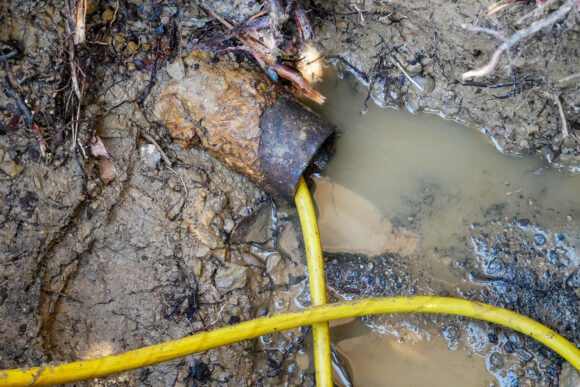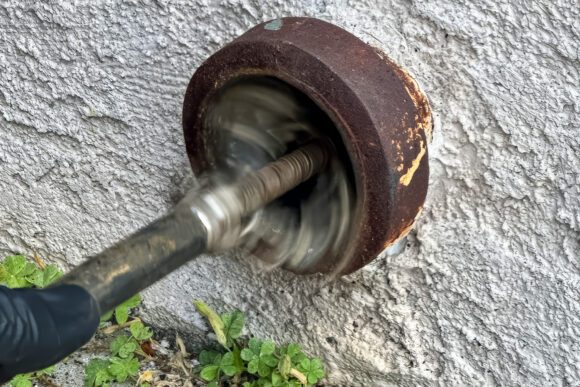Carbide chain descaling uses a high-speed rotating tool equipped with an abrasive carbide chain head to remove hard scale, root intrusions, and corrosion from the interior of sewer pipes.
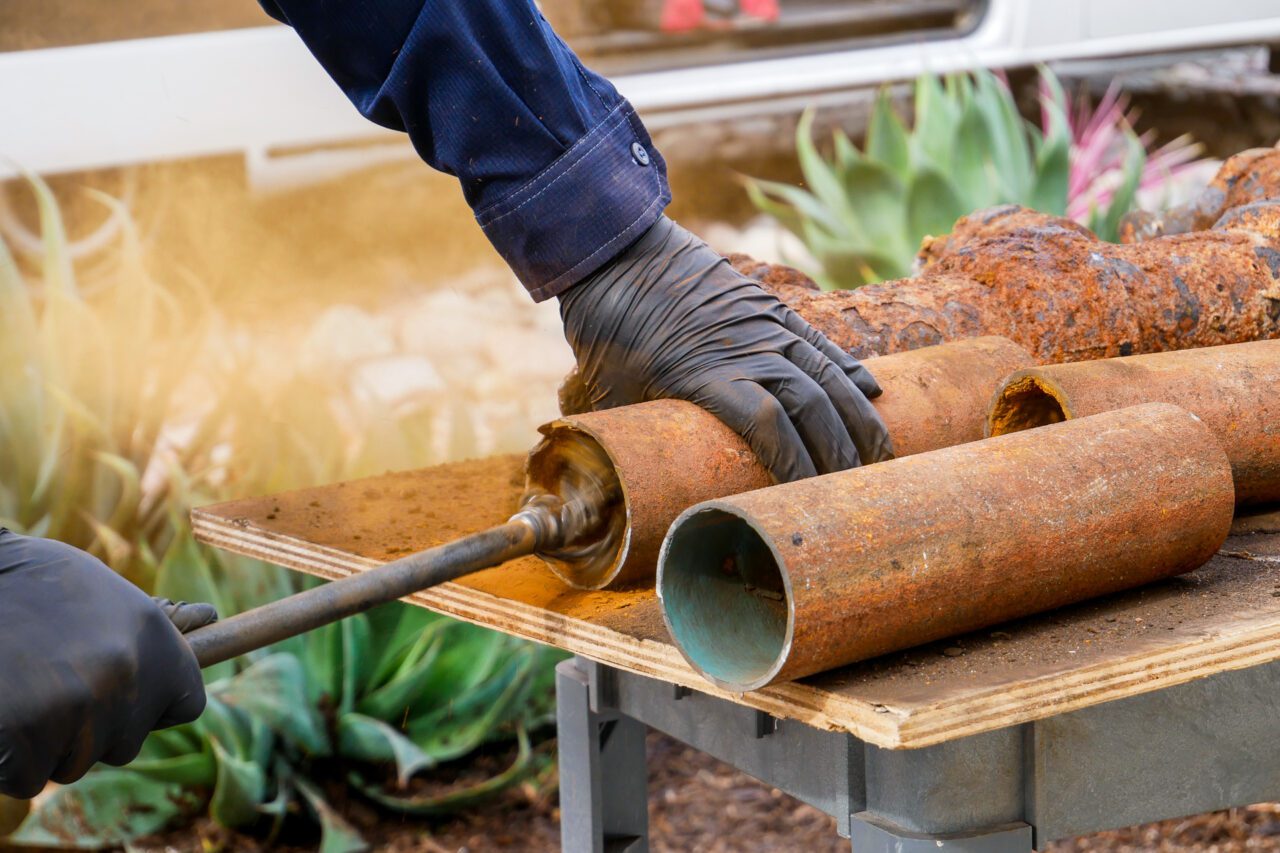
Another non-chemical cleaning method is hydro jetting, which uses high-pressure water—typically ranging from 1,500 to 4,000 PSI—to blast away softer obstructions inside pipes. While hydro jetting is highly effective for clearing common household blockages, it is not capable of removing hardened scale or corrosion. Additionally, there is a greater risk that old cast iron pipes may fail under the pressure of hydro jetting.
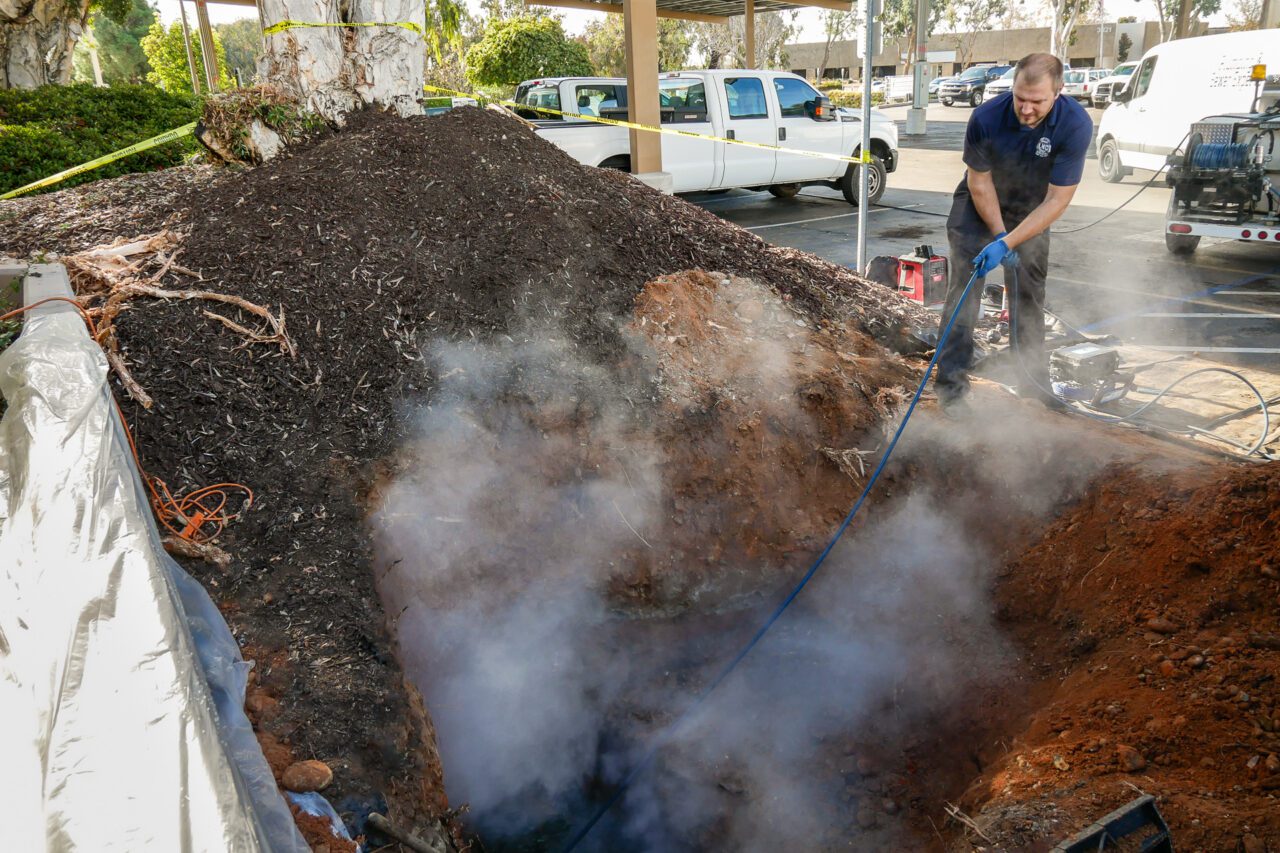
Carbide Chain Descaling vs. Hydro Jetting: Key Differences.
1. Complete Cleanup vs. Partial Cleanup
- Carbide chain descaling can achieve up to 100% descaling efficiency, fully removing hard scale, corrosion, and mineral buildup from pipe walls.
- Hydro jetting, on the other hand, typically reaches around 70% efficiency, as some hardened deposits may remain adhered to the pipe interior.
2. Safer vs. More Aggressive
- Carbide chains are less aggressive and are considered safer for aging or structurally compromised pipes, such as older cast iron systems.
- Hydro jetting is significantly more aggressive; the extreme water pressure can worsen existing cracks or even cause pipe collapse in fragile or heavily corroded lines.
3. Reach & Accessibility
- Carbide chain descaling is effective for pipes up to 100 feet, making it ideal for most residential sewer lines.
- Hydro jetting can reach 300 to 500 feet, making it better suited for longer sewer runs, commercial systems, or main sewer lines. However, its performance may decline in pipes with severe scaling or internal damage.
Deep cleaning aging pipes—especially cast iron lines up to 100 feet long—and removing hardened grease in kitchen drains is best achieved with carbide chain descaling.
Hydro jetting, on the other hand, is more suitable for longer pipe runs with lighter deposits, cutting roots in clay pipes, flushing sludge from cast iron lines, and clearing major blockages in main sewer lines. It can also be used to clean grease in kitchen lines when the buildup is softer.
